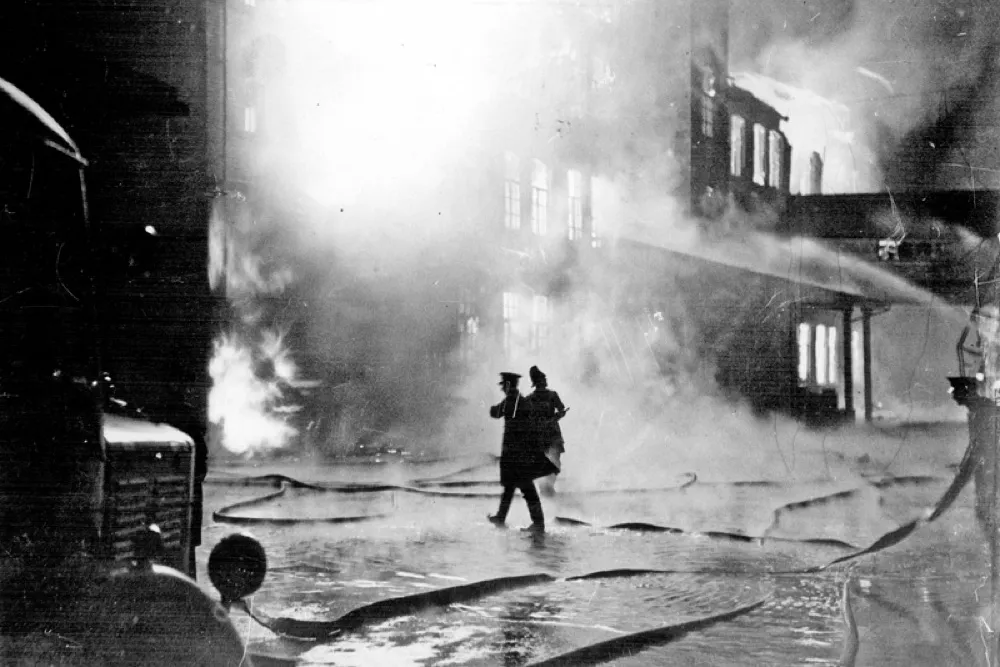Cartophiles. There’s more of us than you think.
At first, when I met another map-enthusiast, it would feel like a rush. Normally, it would start by spotting a quirky map on the wall — the Prague metro system, European Countries in 1885, animal migration patterns. “That’s interesting…” I venture, and our eyes lock. I nod — this is a safe space. Before you know it, they’re showing you the collection, gushing about how interesting this is, I picked this one up abroad, the detail on this one is quite something…
But I’ve stopped finding these conversations so surprising, due to the sheer number of them I’ve had. In fact, I believe almost everyone, deep down, loves maps. If they think they don’t, they haven’t seen enough good ones (and sometimes those memories of stuffy geography classrooms take a bit of dispelling). A simple test: give someone a map of their city or neighbourhood from 100 years ago, then sit back as they spend the next ten minutes exclaiming at the changes that have taken place over that time.

Why is this? Humans are inherently spatial creatures. During our evolution we needed to create mental maps, to communicate where to find food and where there were dangers to avoid (although both GPS and modern limits on child exploration may be curtailing these abilities). Our mental maps give us a frame of reference to which we can attach multiple sources of information. Add to this the possibilities of colour — the healthy human eye being able to distinguish around a million shades — and we can easily process a richness of data that would quickly become overwhelming if shown on a chart.
As temperatures have soared over the last few weeks, we are once again fretting about climate change. But climate change feels almost designed to bamboozle humans — abstract, happening on a large scale over a long timeframe, and probabilistic rather than having clear cause and effect (meaning that, even in the face of record temperatures, scientists have to rely on statements like “climate change made this event ten times as likely”). Meanwhile, the extent of the changes required to our daily lives can make any kind of response feel like an overwhelming challenge.
So, I began to wonder: could maps help us understand how we need to adapt and respond, here in Sheffield?
I’m fortunate enough to spend some of my working life making these mini wonders — a job which has become much easier due to the proliferation of Geographic Information Systems (GIS) software. Here, then, are my five maps that show how the city needs to adapt — fast.
1. We haven’t built any reservoirs in almost a century

Sources: Environmental Information Data Centre, Esri. Blue outline is the city boundary. NB: The largest nearby reservoir, Ladybower, belongs to Severn Trent Water and sends its water to the Midlands. But since you ask: 1943.
During Sheffield’s industrial expansion the city built reservoirs aplenty to respond to a rapidly growing population. Redmires, Rivelin, and Damflask closest to the city — were first. Expansion outwards continued thereafter. But the last of Sheffield’s reservoirs was completed ten years before the Second World War. Since then, the population has grown a bit (and if temperatures further south become more unbearable we may start to see people moving to northern upland areas for a better climate); typical water demand per person has grown a lot (even by 1961, over a third of households in the city didn’t have a bath and over a fifth had no inside toilet) and the risk of prolonged drought has also grown — (though it’s hard to quantify exactly). This is a national problem — no new major reservoirs have been built in the UK since 1991, shortly after privatisation.
This problem is compounded by the fact that:
2. A lot of our water goes to waste

Sources: Yorkshire Water via Data Mill North, Esri
This data for one year shows the extent of water that leaks from the pipes in Sheffield in mega litres (millions of litres). In 2018/19, 11.5 billion litres of water were leaked in the city — roughly equivalent to 222,000 people’s water needs, or 40% of the city’s population. Victorian plumbing compounds the issue, though many ask if enough is being done to invest in fixing leaks by the water companies.
3. Our city centre needs more trees

Sources: Forest Research: UK Urban Canopy Cover, Esri
Next — tree cover. If you live here for about a week someone will tell you we have more trees relative to people than any other city in Europe. I’ve never been able to pin down the source for that one, but we certainly have above average cover — particularly around Ecclesall and Greno Woods (unsurprisingly). But in the city centre, this drops to only 4.4%. As hotter temperatures become more common, we will need more natural shade to shelter in outside. Heatwaves also tend to worsen air pollution, particularly where stagnant air gets trapped in cities, meaning there’s ever more need for trees’ purifying effects.
Air pollution in heatwaves could be made even worse by the fact that:
4. The city borders environmentally important, yet combustible, moorland and peat bog

Sources: Corine, Esri
All along Sheffield’s western flank are extensive moorland and peat bog. These areas are of national importance for the wildlife they harbour — and the vast amounts of carbon dioxide they store (estimated at 3.2 billion tonnes in the UK for peat bogs). Since global warming is caused by the amount of carbon dioxide (and other air pollutants) in the atmosphere, we need to keep this in the ground. That’s not as easy as it sounds, since these areas are a major fire risk when the weather is as dry as it has been recently. In 2018, on the other side of the Pennines, the Saddleworth Moor fire saw 18 square kilometres of moorland burn and air quality in Greater Manchester worsen sharply. With our prevailing winds coming from the west, and the city centre less than five miles from the edge of the moors, this could prove a major problem.
And finally:
5. We need to improve the efficiency of our homes

Sources: Ordnance Survey, Department of Levelling Up, Housing, and Communities, Esri
These final maps show the energy efficiency rating of domestic properties in Sheffield, based on EPC certificates from the last 14 years. While there aren’t many Fs and Gs, there are also precious few As and Bs — with D being the most common category, followed by C.
This is becoming a political as well as environmental problem, with soaring energy prices meaning our efficiency deficit can be directly measured in poverty and poor health. At the same time 87% of Sheffield homes use gas as their primary heating source — which will need to shift massively to electricity if our energy system is to be based on renewables.
What comes next?
There are, thankfully, responses to each of these issues. In Utrecht, wadis across the city collect stormwater and filter it, before feeding it into an open loop system, that recycles and pumps water around the city instead of letting it go to waste. In Toronto, a target of reaching 40% tree canopy cover has been adopted, using the city council’s ownership of pavements to drive up the number of trees lining streets.

The National Trust is moving to ban the burning of heather for grouse shooting on its High Peak estate (though this should arguably be enforced by law across the Pennines), while Brighton has banned single use barbecues on any of its parks and beaches. And in Milan, the municipal government has created tax payback and grant schemes to incentivise residents to retrofit their properties, while transforming its own property estate.
These cities are demonstrating a high level of ambition translated into action, which a city like Sheffield (that prides itself on its green credentials) would do well to follow. And there will be no better starting point for a bold — yet credible — climate adaptation plan than a good map.
Daniel Timms lives in Crookes and works at Metro Dynamics, an urban analytics and strategy company.

Comments
Sign in or become a Sheffield Tribune member to leave comments. To add your photo, click here to create a profile on Gravatar.







